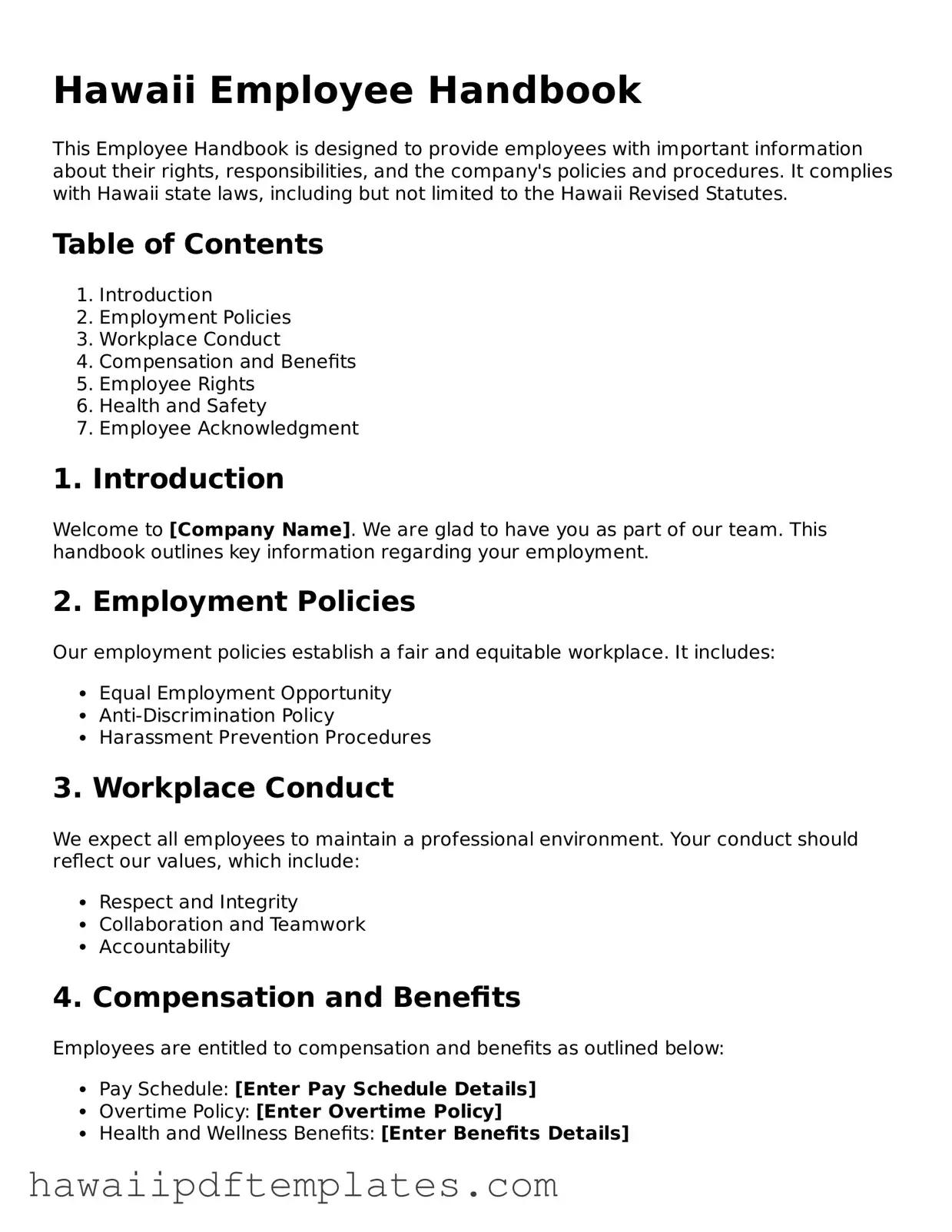Free Employee Handbook Document for Hawaii State
The Hawaii Employee Handbook form is a vital document that outlines workplace policies, employee rights, and expectations for both employers and employees in Hawaii. This form serves as a guide to help create a positive work environment and ensure compliance with state laws. To get started, fill out the form by clicking the button below.
Customize Form Online
